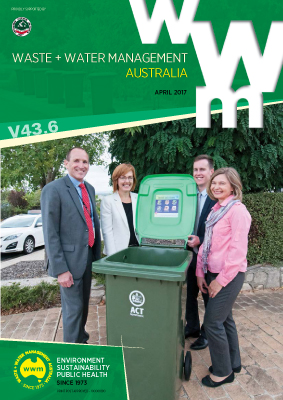The state of the waste data
By Mike Ritchie, MRA Consulting Group
The Australian State of the Environment (SoE) 2016 Overview was tabled in Parliament on 7 March 2017. The previous SoE was in 2011.

The SoE concludes that: “Despite an overall increase in waste generation, Australia’s total disposal tonnage decreased from about 21.5 megatonnes to about 19.5 megatonnes (about 9.5 per cent) between 2006–07 and 2010–11. During this period, the resource recovery rate in Australia increased from 51 per cent to 60 per cent. The quantity of material recycled increased significantly from 21.4 megatonnes to 27.3 megatonnes per year, or by about 27 per cent.” (Australian State of the Environment 2016, p.90)
This is a good outcome. In the space of four years, tonnes of waste recycled have leapt up. All of which means that, in the face of increasing waste generation, the total tonnes of waste to landfill have dropped.
What is disconcerting, however, is the data used. The SoE 2016, released two week ago, is drawing its waste conclusions from data that is now more than six years old. From the National Waste Report 2013. Which, despite its name, is built on data from 2010/11.
Now six years is a long time in this world. Six years ago, Julia Gillard was our Prime Minister, Fukushima melted down, Steve Jobs died and Kate married William. Instagram didn’t exist. It’s a lifetime ago.
Consider the waste data from the National Waste Report 2013:
| State | Year | Landfilled | Recycled | % diversion |
| ACT | 2010/11 | 200,000 | 730,000 | 78% |
| NSW | 2010/11 | 5,940,000 | 11,180,000 | 65% |
| NT | 2010/11 | 280,000 | 20,000 | 7% |
| QLD | 2010/11 | 3,580,000 | 3,960,000 | 53% |
| SA | 2010/11 | 880,000 | 2,940,000 | 77% |
| TAS | 2010/11 | 410,000 | 240,000 | 37% |
| VIC | 2010/11 | 4,560,000 | 7,700,000 | 63% |
| WA | 2010/11 | 3,660,000 | 2,260,000 | 38% |
| Total | 19,510,000 | 29,030,000 | 60% |
I’ve hunted down the latest data reported for each state. Five of Australia’s eight States and Territories are working with data that is two or more years old.
| State | Year | Landfilled | Recycled | % diversion | Years old | Source |
| ACT | 2010/11 | 200,000 | 730,000 | 78% | 5 | Source: National Waste Report 2013 |
| NSW | 2012/13 | 6,300,000 | 10,500,000 | 63% | 3 | Source: State of the Environment 2015 |
| NT | 2010/11 | 280,000 | 20,000 | 7% | 5 | Source: National Waste Report 2013 |
| QLD | 2014/15 | 4,765,854 | 3,673,189 | 44% | 1 | Source: State of Waste and Recycling in Queensland Report 2014-15 |
| SA | 2013/14 | 914,000 | 3,588,000 | 80% | 2 | Source: Zero Waste SA – SA 2013-14 Recycling Activity Report |
| TAS | 2010/11 | 410,000 | 240,000 | 37% | 5 | Source: National Waste Report 2013 |
| VIC | 2014/15 | 4,125,479 | 8,409,714 | 67% | 1 | Source: Victorian Recycling Industry Annual Report 2014-15 |
| WA | 2014/15 | 3,613,310 | 2,621,540 | 42% | 1 | Source: Recycling Activity in Western Australian 2014-15 |
| Total | 20,608,643 | 29,782,443 | 59% |
In this age of “Big Data”, we should be able to expect a State and National Waste Account within six months of the end of each financial year.
We should have the systems in place to enable almost real-time monitoring of just what is happening, letting our policy makers, generators, collectors and processes all respond to real feedback. To improve as they see the system at work.
We should also push benchmarking hard, especially for local government. NSW does it well. It reports on waste data for each council, extensively analysing each. Councils know who the leaders are, who to talk to for tips. This should be standard across the board. Let peer pressure drive improvements.
It’s time Australia got serious on its waste accounts. It’s simply not good enough to release a State of the Environment Report 2016 that is relying upon data that is ancient history.
As always, I welcome your feedback on this, or any other topic on ‘The Tipping Point’.
This article has been published by the following media outlets:
 Waste + Water Management Australia, April 2017 (click to view)
Waste + Water Management Australia, April 2017 (click to view)




